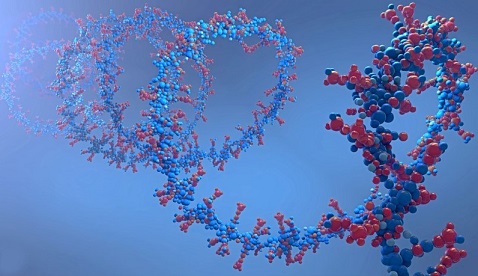Human Circular RNA hsa-circ-0000231 Can Be Used As A Tumor Biomarker For Gastric Cancer
Nikhil Prasad Fact checked by:Thailand Medical News Team May 06, 2024 9 months, 2 weeks, 6 days, 19 hours, 39 minutes ago
Cancer News: Gastric cancer (GC) is a significant global health concern, ranking among the top cancers in terms of both incidence and mortality worldwide. Early diagnosis remains challenging due to the absence of distinctive symptoms in the initial stages, leading to late-stage diagnoses with poor prognosis. Current diagnostic markers like CEA, CA19-9, and CA72-4 lack sufficient sensitivity and specificity, highlighting the urgent need for novel biomarkers with higher diagnostic accuracy. Circular RNA (circRNA), a non-coding RNA molecule, has emerged as a potential candidate due to its involvement in tumorigenesis and its presence in body fluids.
 Human Circular RNA hsa-circ-0000231 Can Be Used As A Tumor
Human Circular RNA hsa-circ-0000231 Can Be Used As A Tumor
Biomarker For Gastric Cancer
Study Objectives
A recent study conducted by researchers from Affiliated Hospital of Nantong University-China that is covered in this
Cancer News report aimed to investigate hsa_circ_0000231 as a novel biomarker for GC diagnosis and dynamic monitoring in serum samples, evaluating its stability, diagnostic efficacy, correlation with clinicopathological parameters, and downstream regulatory network.
Methods and Results
The stability and specificity of hsa_circ_0000231 were assessed using agarose gel electrophoresis, Rnase R assay, and Sanger sequencing. Real-time quantitative polymerase chain reaction (qRT-PCR) confirmed its stable expression and potential for dynamic monitoring postoperatively. Expression levels were significantly reduced in GC serum, cells, and tissues compared to healthy controls.
Correlation analysis revealed associations with TNM (Tumour, Node, Metastasis) staging and neurovascular differentiation. Receiver operating characteristic (ROC) curve analysis demonstrated superior diagnostic value (AUC = 0.781) compared to conventional markers. Combining hsa_circ_0000231 with CEA, CA19-9, and CA72-4 enhanced diagnostic accuracy (AUC = 0.833).
Discussion
Gastric cancer is a formidable challenge in oncology, often diagnosed at advanced stages due to the lack of early symptoms. This delay in diagnosis contributes to the high mortality rates associated with this malignancy. Current diagnostic tools like CEA, CA19-9, and CA72-4, while widely used, suffer from limitations in sensitivity and specificity, necessitating the search for more reliable biomarkers.
Circular RNAs (circRNAs) have garnered attention in recent years due to their unique circular structure and regulatory functions. Among these, hsa_circ_0000231 has emerged as a potential biomarker for GC diagnosis and monitoring. The study employed rigorous methods to validate the stability and specificity of hsa_circ_0000231, including agarose gel electrophoresis, Rnase R assay, and Sanger sequencing. These analyses confirmed the circular nature of hsa_circ_0000231 and its resistance to degradation by Rnase R, ensuring its suitability as a biomarker candidate.
Furthermore, real-time quantitative polymerase chain reaction (qRT-PCR) revealed consistent do
wnregulation of hsa_circ_0000231 in GC serum, cells, and tissues compared to healthy controls.
This downregulation was particularly pronounced in advanced stages of GC, indicating a potential correlation with disease progression. Correlation analysis further supported these findings, showing associations between hsa_circ_0000231 expression levels and TNM staging, lymph node metastasis, and neurovascular invasion.
The diagnostic efficacy of hsa_circ_0000231 was evaluated using receiver operating characteristic (ROC) curve analysis, demonstrating a superior area under the curve (AUC = 0.781) compared to traditional markers like CEA, CA19-9, and CA72-4. Importantly, combining hsa_circ_0000231 with these markers significantly improved diagnostic accuracy (AUC = 0.833), highlighting its potential as a complementary biomarker panel for GC diagnosis.
Conclusion
In conclusion, hsa_circ_0000231 shows promise as a novel biomarker for GC diagnosis and monitoring. Its stable expression, correlation with clinicopathological parameters, and superior diagnostic efficacy underscore its potential clinical utility. However, further research is warranted to elucidate its specific mechanisms of action, validate its utility in larger patient cohorts, and explore its role in dynamic monitoring post-surgery. Continued advancements in non-coding RNA research hold immense potential for improving GC diagnosis, prognosis, and therapeutic strategies, ultimately benefiting patient outcomes in the fight against gastric cancer.
The study findings were published in the peer reviewed journal: Cancer Reports (Wiley).
https://onlinelibrary.wiley.com/doi/10.1002/cnr2.2081
For the latest
Cancer News, keep on logging to Thailand Medical News.
Read Also:
https://www.thailandmedical.news/news/breaking-news-chinese-researchers-discover-circrnas-encoded-by-sars-cov-2-virus-that-can-cause-cancer-millions-expected-to-get-cancer-eventually
